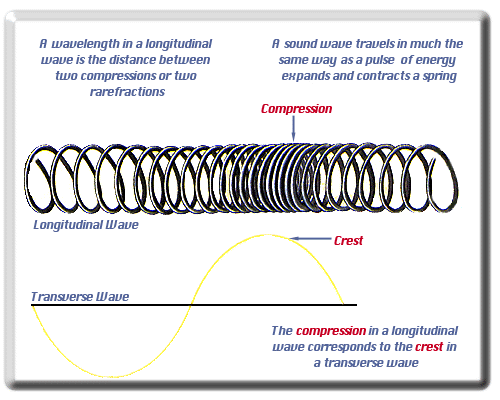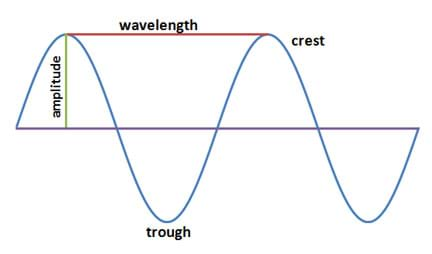Hello long time no see! if anybody knows where the title came from, you're amazing. Hopefully, I won’t have to mention he
who shall not be named (Isaac newton, not Voldemort) in my blogs for a very long time. No,
today I’ll be talking about waves. Waves are rhythmic disturbances that carry
energy from one place to the next. Water waves are a type of wave that you’ve
certainly seen before, and you’ve experienced sound waves before too.

There are two main groups of waves that we’ll be focusing
on. They are: Electromagnetic and Mechanical waves. Mechanical waves use matter
to transport energy. Electromagnetic waves do not need matter to transfer
energy, so they can travel through Space!

Two types of Mechanical waves are Transverse and
Compressional waves. Transverse waves cause the medium they are traveling
through to move either up and down or back and forth. Compressional waves (or
Longitudinal waves, whatever tickles your fancy) the energy passing through the
medium causes it to move forward and backwards. Both of these mechanical waves
cause some form of noticeable movement in the medium.

Now I’m going to share with you all some pretty important
definitions pertaining to waves. A wave’s amplitude is related to the amount of
energy it carries. The higher the amplitude the more energy. A wave’s crest is its
highest point and the trough is the lowest
point. Finally we come down to frequency which is the number of wavelengths
that pass by a certain point every second.

For this next part we’ll focus on specifically sound waves. Sound waves are mechanical compressional waves that are created by vibrations. An example of this would be our vocal chords. When we sing (or even talk) we are
blowing air from our lungs over our vocal chords, causing them to vibrate.
Next, I’ll be talking about string instruments. With acoustic guitars, when the strings are plucked, they vibrate back and forth. Then these strings transfer the energy of sound into the hollow body of the acoustic. This causes the air inside to reverberate. Electric guitars are similar, only they are powered by electromagnetism. These guitars use pickups which are magnetized and lay under the electric guitar's strings. These pickups produce a small electric current that travels to the hooked up amplifier. After that, the amplifier boosts the electric current. Finally, it comes out through a loudspeaker. I have the perfect example of someone who sings AND plays guitar; wowie such talent!
 Baaaaaby Bobby <3
Baaaaaby Bobby <3
Next, I’ll be talking about string instruments. With acoustic guitars, when the strings are plucked, they vibrate back and forth. Then these strings transfer the energy of sound into the hollow body of the acoustic. This causes the air inside to reverberate. Electric guitars are similar, only they are powered by electromagnetism. These guitars use pickups which are magnetized and lay under the electric guitar's strings. These pickups produce a small electric current that travels to the hooked up amplifier. After that, the amplifier boosts the electric current. Finally, it comes out through a loudspeaker. I have the perfect example of someone who sings AND plays guitar; wowie such talent!
 Baaaaaby Bobby <3
Baaaaaby Bobby <3
Well, that's all folks! I really enjoyed being able to mention music so much this week, but I bet you didn't! I hope I helped you learn something just the same though! May your boots be as pointy as Nick Cave's and your jeans as fitting as Simon Gallup's~
links:
water waveThe coolest person ever circa 1981
information:
Introduction to Physical Science 462-468
No comments:
Post a Comment